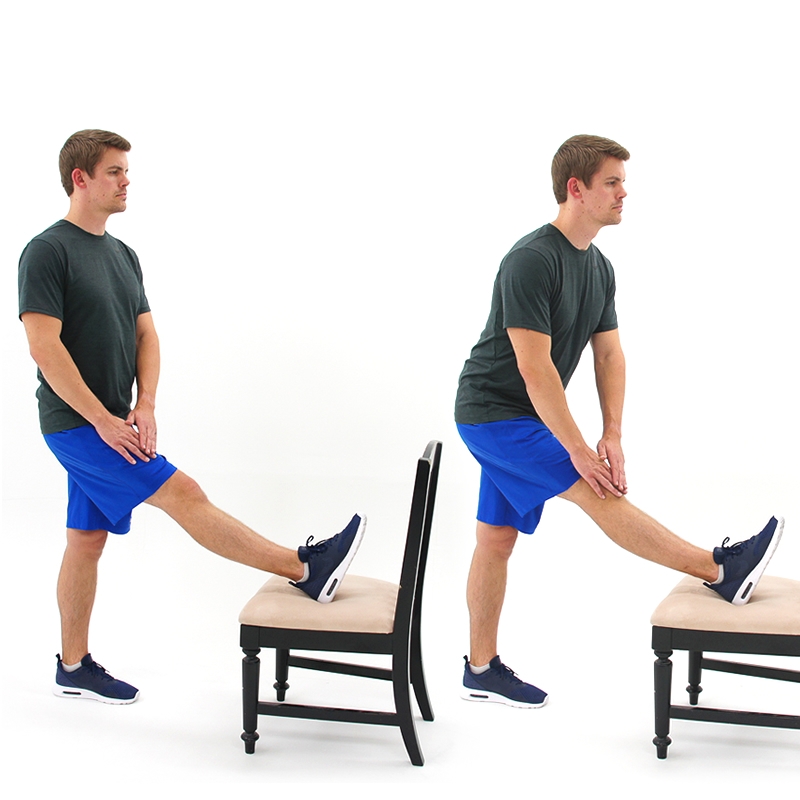The knee, a complex joint and largest joint in the body, is made up of four main structures – bones (femur, tibia and patella), cartilage, ligaments and tendons. Due to its complexity, the knee is very vulnerable to injuries. Even simple, everyday movements, like sitting, standing and walking, put stress on knees, so a sport or activity that requires a lot of repetitive jumping, twisting and rapid motions increases stress on knees and puts a person at more risk of injury.
Knee injuries can affect a wide variety of structures which can include ligaments, tendons and joint surface areas, as well as other surrounding structures. While many knee injuries are unavoidable, there are steps you can take to assist in the prevention of knee injuries, including:
- Focus on improving global strength of your lower extremities, especially the glutes, quadriceps, hamstrings and calf muscles to assist with stability around the knee and hip joints.
- Maintain and improve lower extremity flexibility in your quadriceps, hamstrings and calf muscles.
- Improve balance to help assist the body with the demands it goes through during high agility sports or activities.
- Take time to warm up before exercise, and include both static and dynamic stretches and movements.
Try the following exercises to help strengthen muscles and improve flexibility and balance:
Squats
(Supported squat)
While standing with feet shoulder-width apart and in front of a stable support for balance assist if needed, bend your knees and lower your body toward the floor. Your body weight should mostly be directed through the heels of your feet. Return to a standing position.
Knees should bend in line with the second toe and not pass the front of the foot.
Lunges
(Deep forward lunge, alternating)
Start by standing with feet shoulder-width apart. Next, take a large step forward and allow your front knee to bend. Allow your back knee to bend as well until it touches the floor or comes close to touching the floor.
Then, push off your forward leg and return to the original position. Then perform on the other side. Repeat this alternating sides.
Keep your pelvis level and straight the entire time.
Your front knee should bend in line with the second toe and not pass the front of the foot.
Hamstring Stretch
(Standing hamstring stretch, propped)
Start by standing and prop the foot of the affected leg on a chair or a step.
Next, slowly lean forward until a stretch is felt behind your knee/thigh. Bend through your hips and not your spine. Hold, then return to starting position and repeat.
Quad/Rectus Femoris Stretch
Place a strap or belt around your foot as shown. Bring the other end of the belt around your shoulder. If using a belt, you may need to link two belts together for extra length.
While lying on a table or high bed, let the affected leg lower toward the floor. Next, gently pull on the strap to get your knee to bend until you feel a stretch on top of your thigh.
High Knee Jogs
Aim to raise your knee as high as your hips. Lift your left foot and right arm at the same time. Quickly switch to the opposite foot by lifting your right foot to the height of your hip. Simultaneously, move your right arm back and left arm forward and upward. Raise your foot. Continue with regular intervals. Learn more and watch a tutorial here.
Lateral Shuffling
Begin in the standing position with your feet hip-distance apart. Bring both hands in front of your chest in a guard position and sink into a deep knee bend. Start with the right foot moving right and left foot following. Shuffle to the right four steps, then back to the left four steps. Continue shuffling right-left for the desired amount of time while keeping your core engaged and your chest lifted. Learn more and watch a tutorial here.
Carioca Drill
Start off by moving to the right. Step behind with the right foot (image 1). Shuffle laterally with the left foot (image 2). Bring the right foot up and across with an explosive crossover step (image 3) and carry it across the body, then upon your foot hitting the ground, go back to the behind step and repeat. Down and back is one repetition. Learn more and view a tutorial here.
If you experience a knee injury or pain, it’s important to seek medical attention. Conservative treatment, such as rest, ice, over-the-counter medication and simple rehabilitation exercises, may be all you need. However, ongoing pain that’s left untreated could turn into something more severe. At Central Indiana Orthopedics, our team of orthopedic specialists can help assess your knee injury, develop an individualized treatment plan and get on the road to recovery. For sudden injuries, visit our Walk-In Clinic, no appointment or referral needed. For more chronic issues, schedule an appointment with one of our orthopedic specialists or Physical Therapy clinic. Learn more at ciocenter.com/services.





